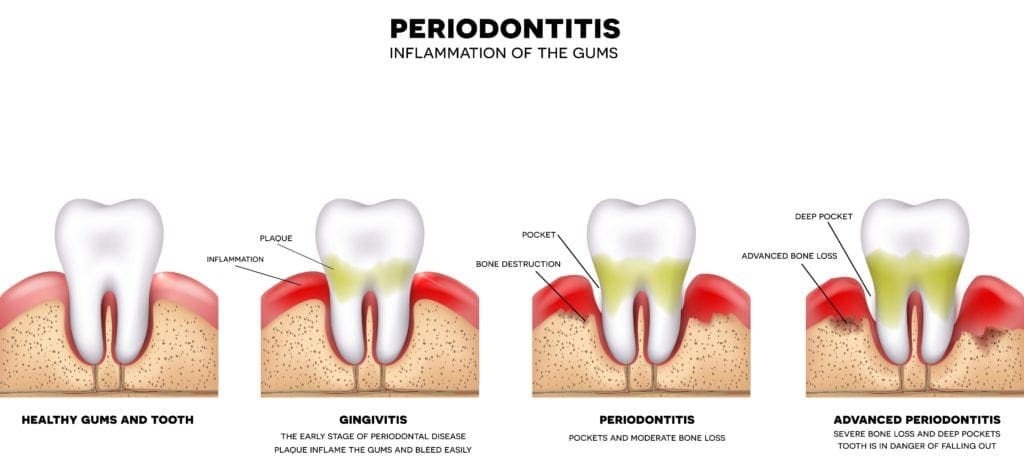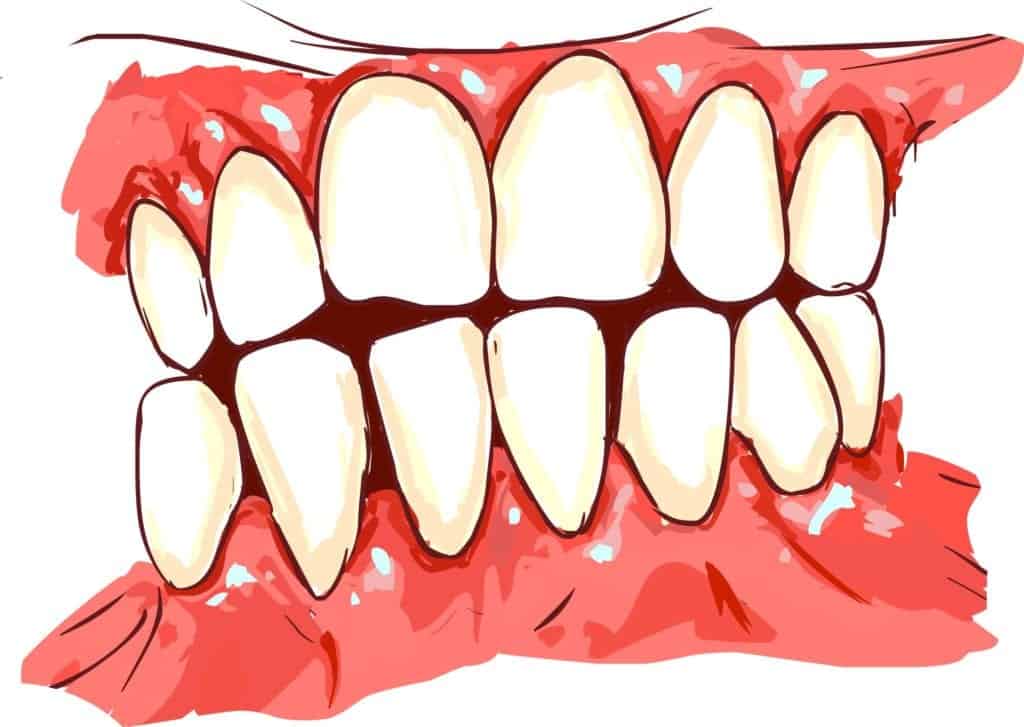Just as naturally-occurring bacteria in your mouth can affect your teeth by causing tooth decay, they can also affect your gums by causing gum disease. Gum disease, also known as periodontal disease, is unfortunately highly common. In fact, the Centers for Disease Control and Prevention (CDC) have noted that over 50% of Americans over the age of 30 and 70% of Americans over the age of 65 currently have some form of gum disease.

There are two forms of gum disease: gingivitis and periodontitis. Gingivitis is a mild form of gum disease that can usually be reversed with treatment. Periodontitis, on the other hand, is a more severe form of gum disease that cannot be reversed and will continue to progress without treatment. Individuals with periodontitis are encouraged to undergo regular specialized cleanings to manage their periodontitis and prevent it from becoming worse.
The early detection of gum disease increases the likelihood that it can be reversed with treatment. To detect gum disease, here are three common signs to look for:

Abnormal Gum Appearance
Healthy gums are a coral pink color, although they may be slightly darker in those with darker skin pigments. Abnormal gums are those that are deep pink, red, swollen, inflamed, or that bleed easily. Contrary to what many believe, your gums are not supposed to bleed when you floss. If your gums appear to be inflamed, discolored, swollen, or bleeding, then you should schedule an appointment with your general dentist immediately.


Gum Recession
Healthy gums cover the entire tooth root and are firmly attached to the teeth. When bacteria accumulates in the gum pockets, this causes the gums to pull away from the teeth. Receding gums can look loose around the teeth and they make the teeth look larger than usual. This is because when the gums pull away from the teeth, they expose the tooth root. Additionally, severe gum recession can eventually lead to the teeth becoming loose and/or shifting in position. This can result in teeth falling out and/or a misaligned bite.

Pain
In most cases, gum disease does not cause pain. This is one reason why it often goes unnoticed until it has advanced. When pain does occur, it is usually the result of extreme inflammation and is felt in the gums or even while chewing. However, pain can also occur in the form of tooth sensitivity. This happens because gum recession causes tooth roots to be exposed. Tooth roots contain a thinner layer of enamel because they are normally protected by the gums. Since they have a thin protective coating, stimuli are more likely to enter the tooth and cause pain.
Being able to identify gum disease through abnormal gum appearance, gum recession, and pain, will enable you to seek dental treatment sooner rather than later. A prompt dental exam and treatment carried out by a general dentist is essential to either reverse or manage periodontal disease. Unfortunately, gum disease is not something you can ignore and it will continue to get worse the longer it persists. If you have noticed any of these three common signs of gum disease, schedule an appointment with your local general dentist.

Dr. Dennis Laurich has been practicing dentistry for over 40 years. He received his DDS degree from the University of Michigan Dental School and regularly attends oral health care conventions to continue his dental education. This allows him to treat patients with the leading dental technology and methodologies. Additionally, he is a member of the American Dental Association, Michigan Dental Association, and the Detroit District Dental Society.




